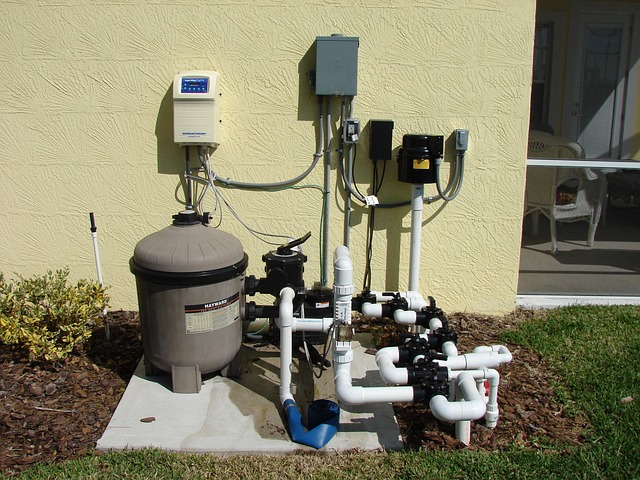How monthly home filtration plans simplify safe drinking water at home
Monthly home filtration plans bundle replacement cartridges, routine maintenance, and monitoring into a predictable schedule, helping households keep water quality consistent. Subscriptions can pair sensor-based monitoring with technician support or DIY replacement kits to reduce the guesswork around when to change filters and how to test for contaminants.

Access to reliably safe drinking water at home often depends on ongoing attention to filtration maintenance and timely replacement of cartridges. Monthly home filtration plans aim to simplify that work by combining installation support, scheduled shipments, and, in some cases, sensors for monitoring quality. Rather than tracking multiple dates and wondering about chlorine taste, microplastics, or sediment buildup, a subscription approach centralizes upkeep and documentation so households can focus on everyday use.
This article is for informational purposes only and should not be considered medical advice. Please consult a qualified healthcare professional for personalized guidance and treatment.
How do subscriptions change maintenance?
Monthly plans convert periodic maintenance tasks into a predictable routine. Instead of checking cartridge status manually, subscribers receive replacements on a cadence aligned with typical cartridge lifespans. Many services include simple instructions for in-home replacement or optional technician visits for more complex systems. This reduces missed change intervals that can degrade performance and allows users to maintain consistent filtration for chlorine reduction, taste improvement, and sediment capture.
Which cartridges and filter types to choose?
Different cartridges — carbon, ceramic, membrane (reverse osmosis), and specialty media — target different contaminants. Carbon cartridges are common for chlorine and taste control; ceramic elements help block bacteria and large particulates; membranes reduce dissolved solids and some microplastics depending on pore size. Monthly plans often let households select systems that combine these technologies or provide mixed-media cartridges that address multiple concerns, matching the choice to local water quality and household priorities.
How are installation and monitoring handled?
Installation options range from DIY insert-and-sink kits to professional in-home service. Some subscription providers include initial installation or remote guidance. Increasingly, systems offer sensors and monitoring that send usage or quality alerts to a mobile app or dashboard, indicating when flow rates drop or a filter reaches end-of-life. These monitoring features improve confidence in the filtration system and can alert homeowners to unusual changes in water quality that merit testing.
What is cartridge lifespan and replacement?
Cartridge lifespan varies by type and household water use. Typical lifespans can range from 1–6 months for pitcher or faucet cartridges up to 6–12 months for under-sink carbon filters, while RO membranes and some ceramic elements may last longer when pre-filters are replaced regularly. Monthly subscription plans allow households to set replacement intervals that align with real-world use and local testing, and many providers let customers adjust shipment frequency if usage or water quality monitoring suggests a different cadence.
How do costs compare among providers?
Monthly subscription pricing depends on system complexity, included services (installation, testing, technician visits), and replacement cartridges. Below is a comparative snapshot of representative providers and products with typical cost ranges for subscriptions or replacement supplies. These are presented as estimates to help households evaluate recurring expenses alongside expected maintenance benefits.
| Product/Service | Provider | Cost Estimation |
|---|---|---|
| Pitcher and replacement cartridges (subscription) | Brita (retail subscription channels) | $5–$15 per cartridge; $10–$30 monthly typical depending on frequency |
| Replacement cartridges for countertop/inline filters | ZeroWater (retail/subscription) | $8–$20 per filter cartridge; $10–$25 monthly depending on usage |
| Under-sink RO replacement filter kits | APEC Water Systems (direct purchase/subscription options) | $30–$80 per set every 6–12 months; $5–15 monthly amortized |
| Service plans and maintenance for whole-home or complex systems | Culligan (local services) | $20–$100+ per month depending on system rental, service level, and region |
Prices, rates, or cost estimates mentioned in this article are based on the latest available information but may change over time. Independent research is advised before making financial decisions.
In addition to per-cartridge costs, consider installation fees, periodic testing, and optional sensor or monitoring subscriptions. If providers include technician visits, factor those service premiums into total recurring cost.
How does sustainability and testing fit?
Sustainability considerations include cartridge disposal, energy use, and materials. Some subscription services provide recycling programs for used carbon or ceramic cartridges, while others encourage bulk packaging reductions. Regular testing—either through provider-offered water tests or independent lab analysis—helps ensure that filtration choices remain effective against contaminants such as chlorine byproducts or microplastics. Combining routine testing with sensor monitoring improves long-term water quality management and supports sustainable replacement schedules.
Conclusion
Monthly home filtration plans address many practical hurdles of maintaining safe drinking water by scheduling cartridge replacement, simplifying installation options, and adding monitoring that reduces uncertainty. For households evaluating subscriptions, consider cartridge type (carbon, ceramic, membrane), the availability of installation or sensor monitoring, the expected lifespan of components, and verified cost ranges. Regular testing and attention to sustainability practices help ensure that a subscription delivers consistent water quality over time.






